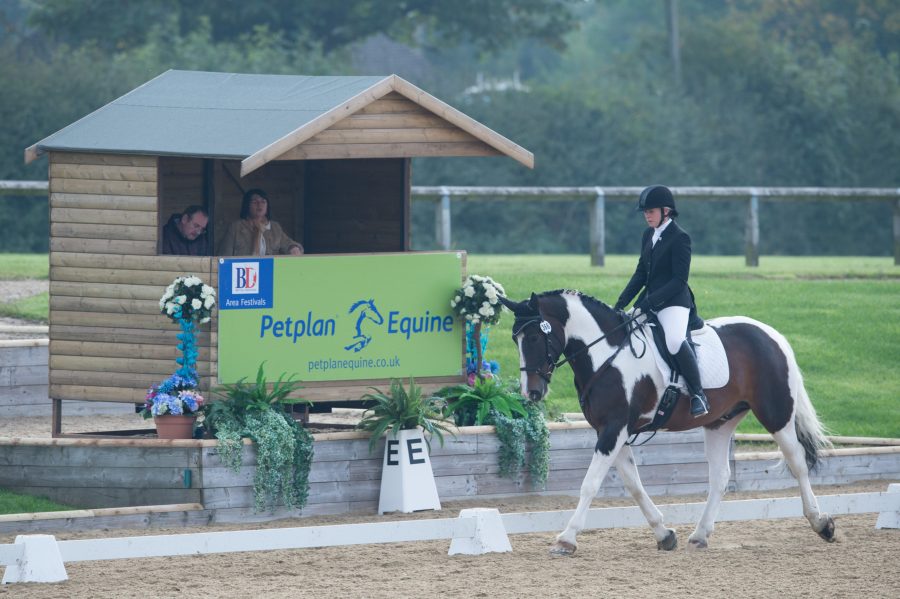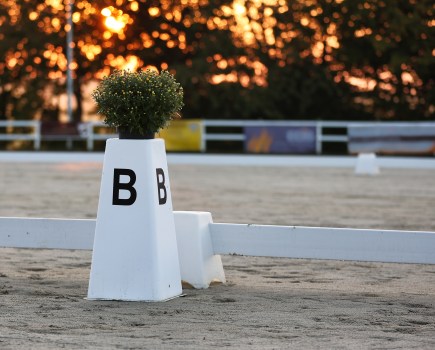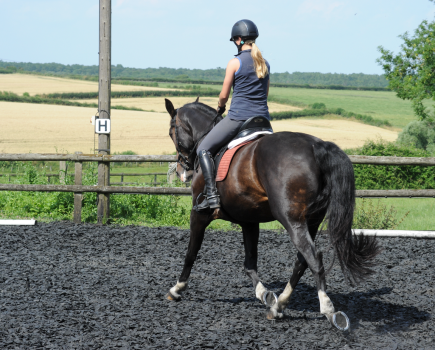Confidence in yourself and your horse counts for a lot in a dressage test. If you believe you can do it, you’re more likely to enter at A feeling confident and this will filter through to your horse, too. But even the smallest of blips can set us back and trigger an onset of nerves or wobble in self-confidence: a spook at the white boards perhaps, or bucking during the test instead of making a smooth transition to canter. Other common worries are how to nail a square halt, make a dressage test stand out and the best way to salute.
We asked FEI dressage judge and trainer Andrew Fletcher to answer five questions from aspiring dressage riders who want to feel more confident and do their best when competing between the white boards and this is what he said…
Is bucking penalised?
Question: My horse can be a little naughty and buck during a test and it really knocks my confidence because I think my marks are going to drop and then I think ‘what is the point?’. How do judges really view bucking and naughtiness during a test?
Andrew answers: Judges are all human and generally very nice individuals with varied experiences. Most judges will appreciate horse problems and understand that riding dressage tests is not always easy or straightforward.
Primarily, I would concentrate on dealing with trying to find a solution to this issue and not worry too much about the score or what people may or may not think. My advice would be to persevere and work on keeping your horse in front of your leg during the working in and from the start of the test.
If practice does not improve your horse’s bucking, then I would suggest getting some help from a reputable trainer. A good trainer may sort your horse’s problem quickly and they may even accompany you to a competition. Horses often buck for a reason, so consider what your horse may be trying to tell you. Good luck!
How to make a dressage test stand out
Question: What makes a dressage test stand out to you?
Andrew answers: A good standout test will always be in good balance of both horse and rider. Horses who work through a test while maintaining good longitudinal and lateral balance will show good levels of self carriage and suppleness while showing correct rhythm in all paces.
Invisible aids are desirable from a rider who is in complete harmony with the horse. Riders who aim to develop this art and skillset should closely observe the very best of riders, figuring out what they are doing to achieve this skill.
Impulsion from the horse’s hind legs will always be pleasing to see as long as they are not being run onto the forehand. Always remember to ride from back to front, meaning impulsion from the hindlegs to an elastic rein contact that helps balance the horse and manage energy.
Square halts
Question: How can I perfect my square halt at the end of a test?
Andrew answers: Good square halts are achieved when horses arrive in good balance and are not against the hand. This happens when you do the following:
- Try to keep the hind legs active while collecting for a downward transition.
- Progressive halts are fairer to your horse in the early days and at new levels.
- Get into the habit of always correcting your halts whenever you know they’re not square.
- Use mirrors and eyes on the ground from a helper to see when your horse is standing square.
- Look down in halt if needed and train your horse to move his legs according to your correction aids.
Remember, repetition is key. Try to make your halts easy and fair to your horse while still being of a high standard.
The correct way to salute
Question: When I salute to the judges, should I smile — and when dropping one hand to my side, which hand is best? I’d like some simple tips to make my entrance and salute better.
Andrew answers: A good salute should be completed confidently and in good balance while your horse is fully immobile. It is very acceptable to smile, but not essential. Reins should be taken in one hand and a soft contact kept with the reins. A salute should be taken with the other hand of your choice. Immobility should be kept throughout. The straighter your horse halts the better quality your halt will be. Use the halt to ensure you are sat upright and well balanced for the test ahead. Go for it!
Asking the judge for feedback
Question: I don’t always understand the comments on my test sheet. Is it acceptable to approach the judge and ask?
Andrew answers: Understanding the judge’s summary at the end of your dressage sheet is essential and one of the most important areas of the test sheet. All judges are trained to sum up the test in the judge’s comments box at the end of the test sheet.
These summing up comments should be factual and reflect the actual test, ideally outlining good areas and maybe pointing out weaker areas and future improvements. If you don’t understand these comments, it is a good idea to approach the judge for a polite discussion after the class has finished.
Judges are encouraged to discuss tests at the end of the class if riders wish. We all love the sport and if judges can help a rider improve and grow in confidence then we are doing our job correctly.









